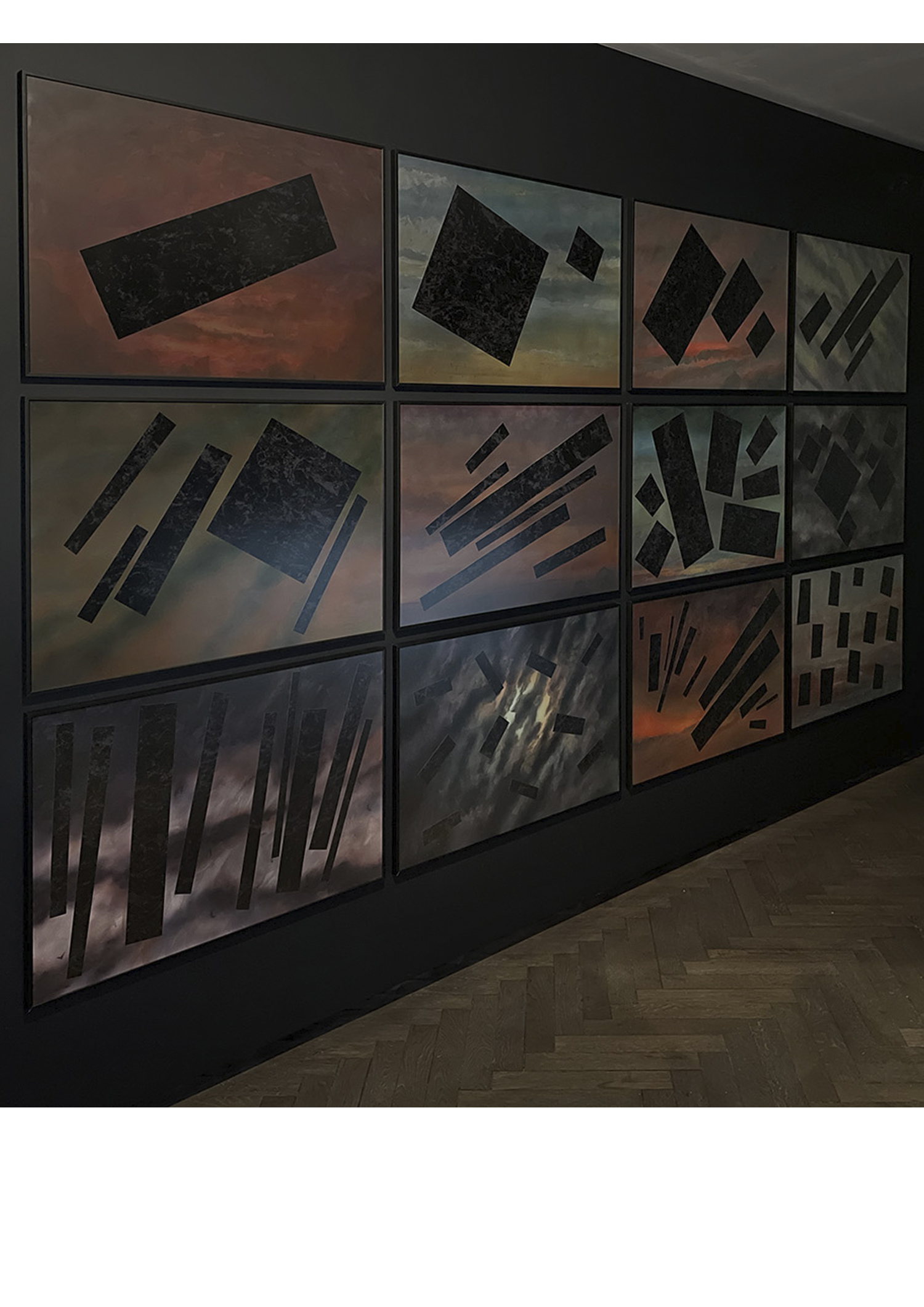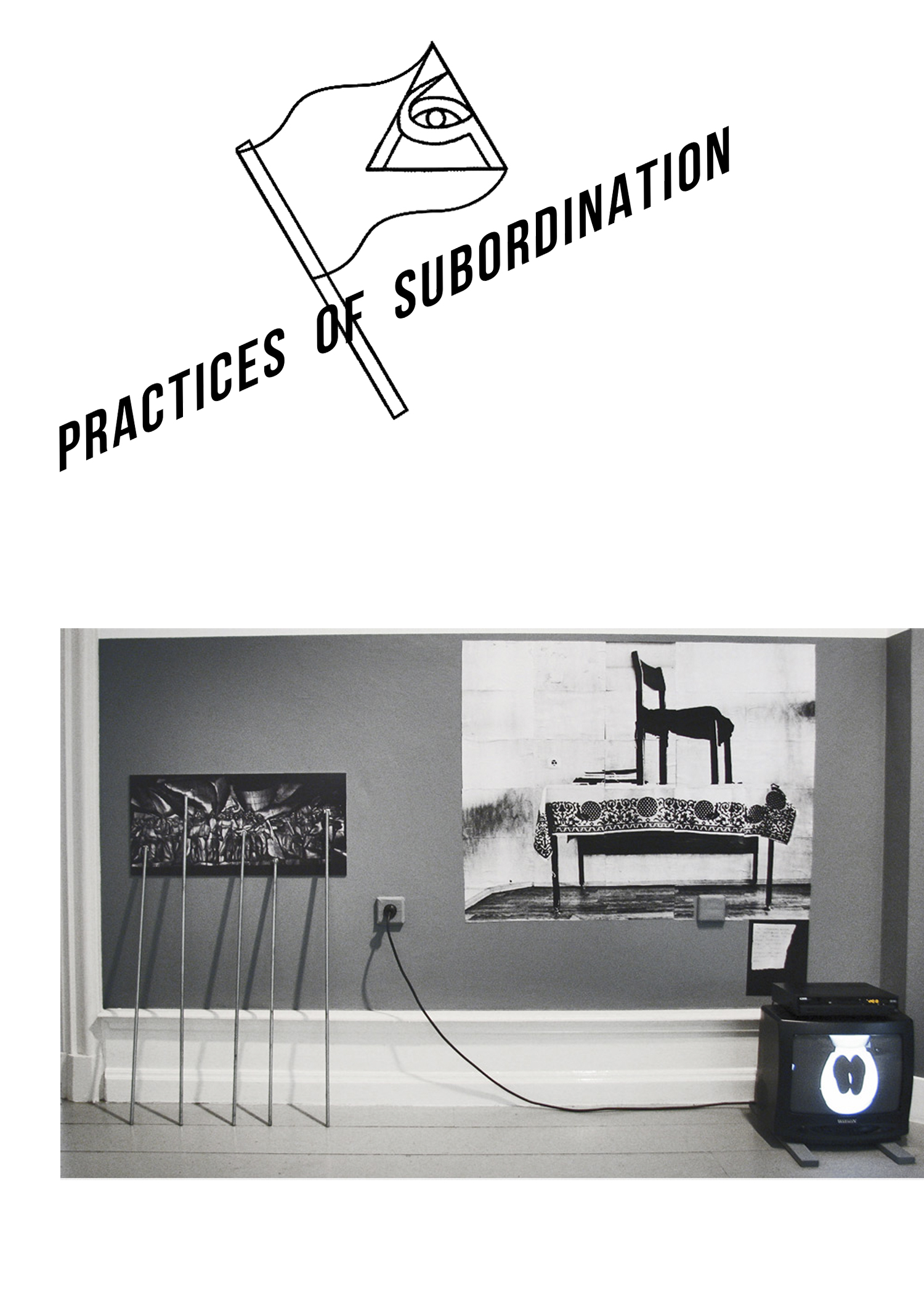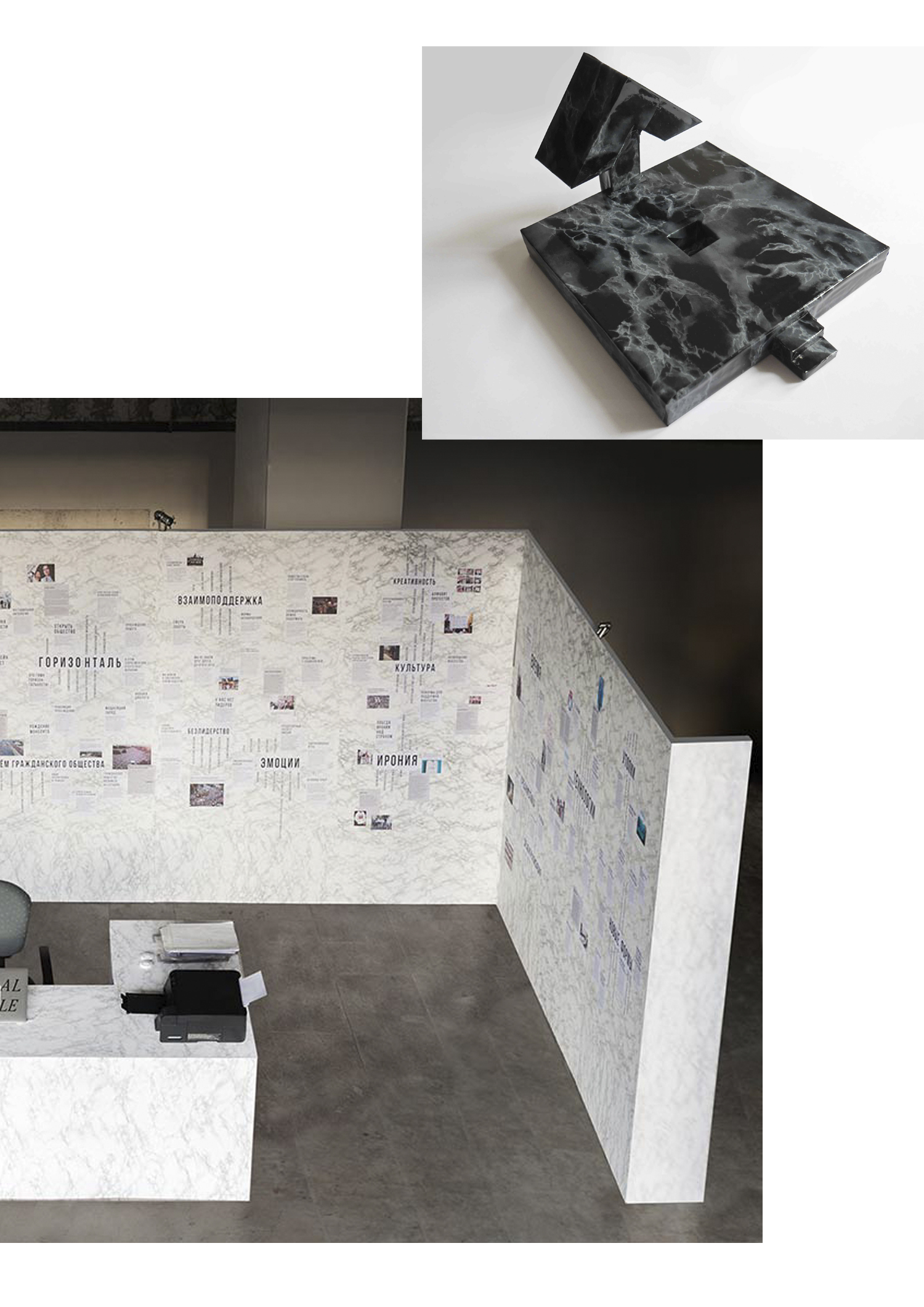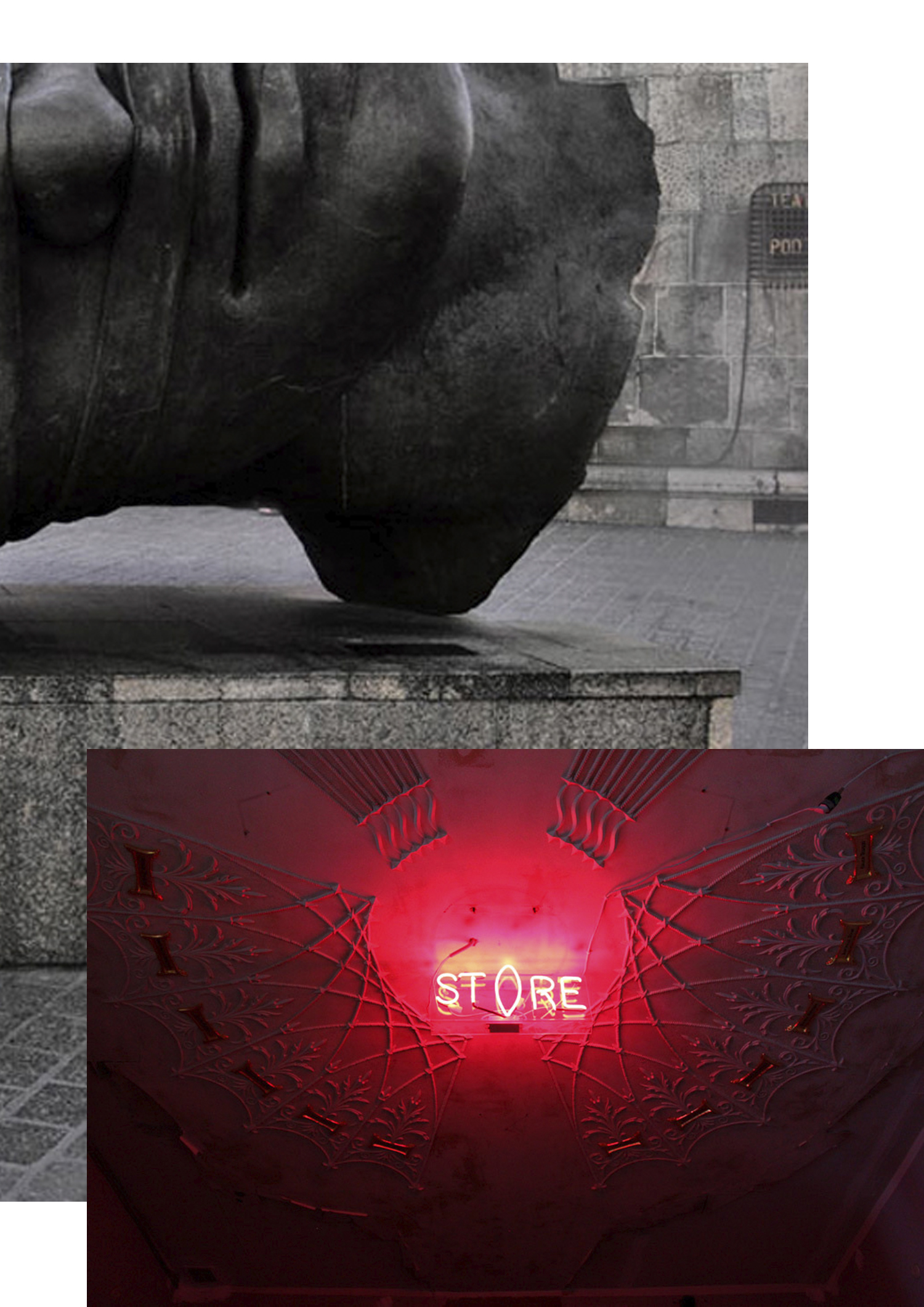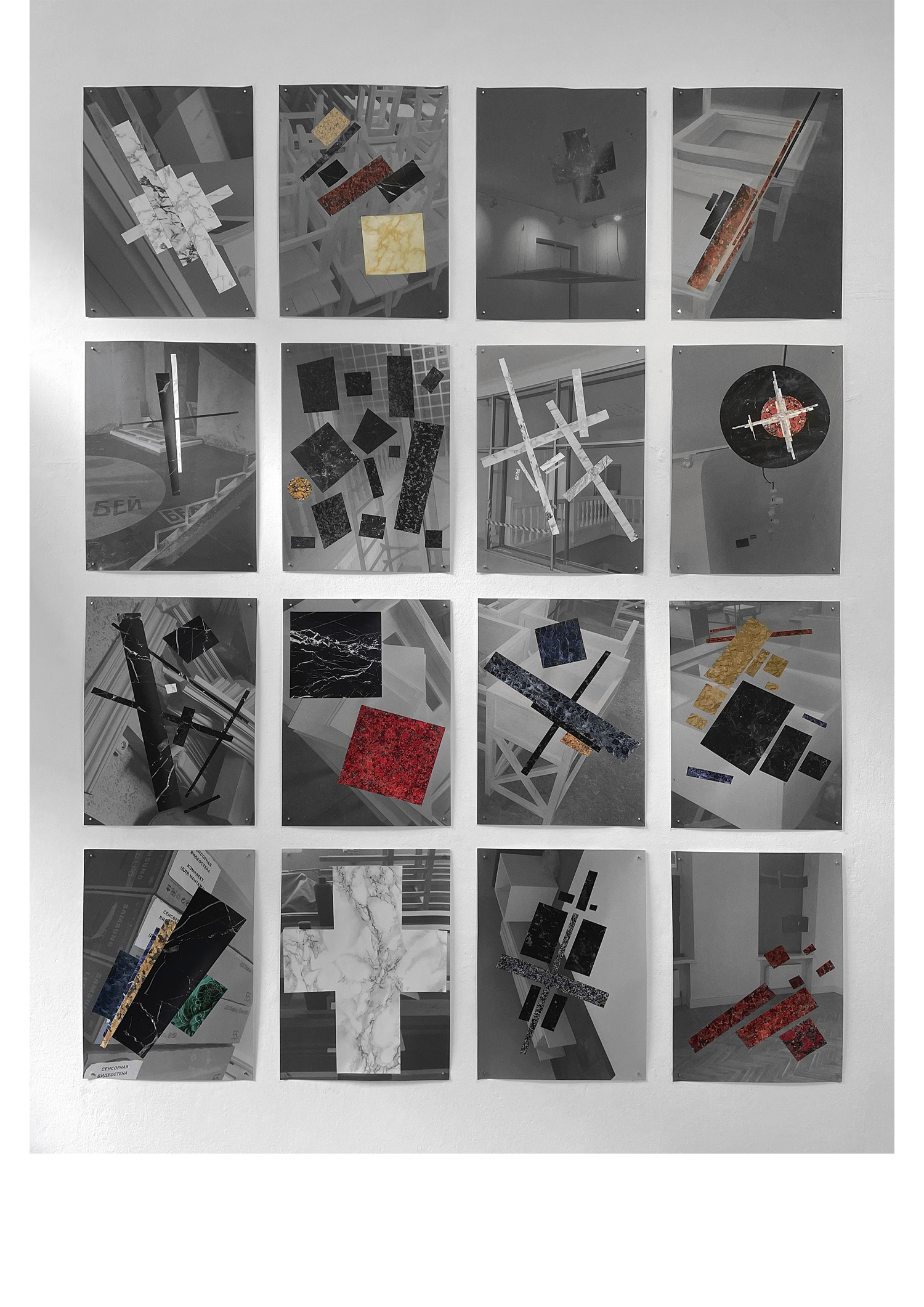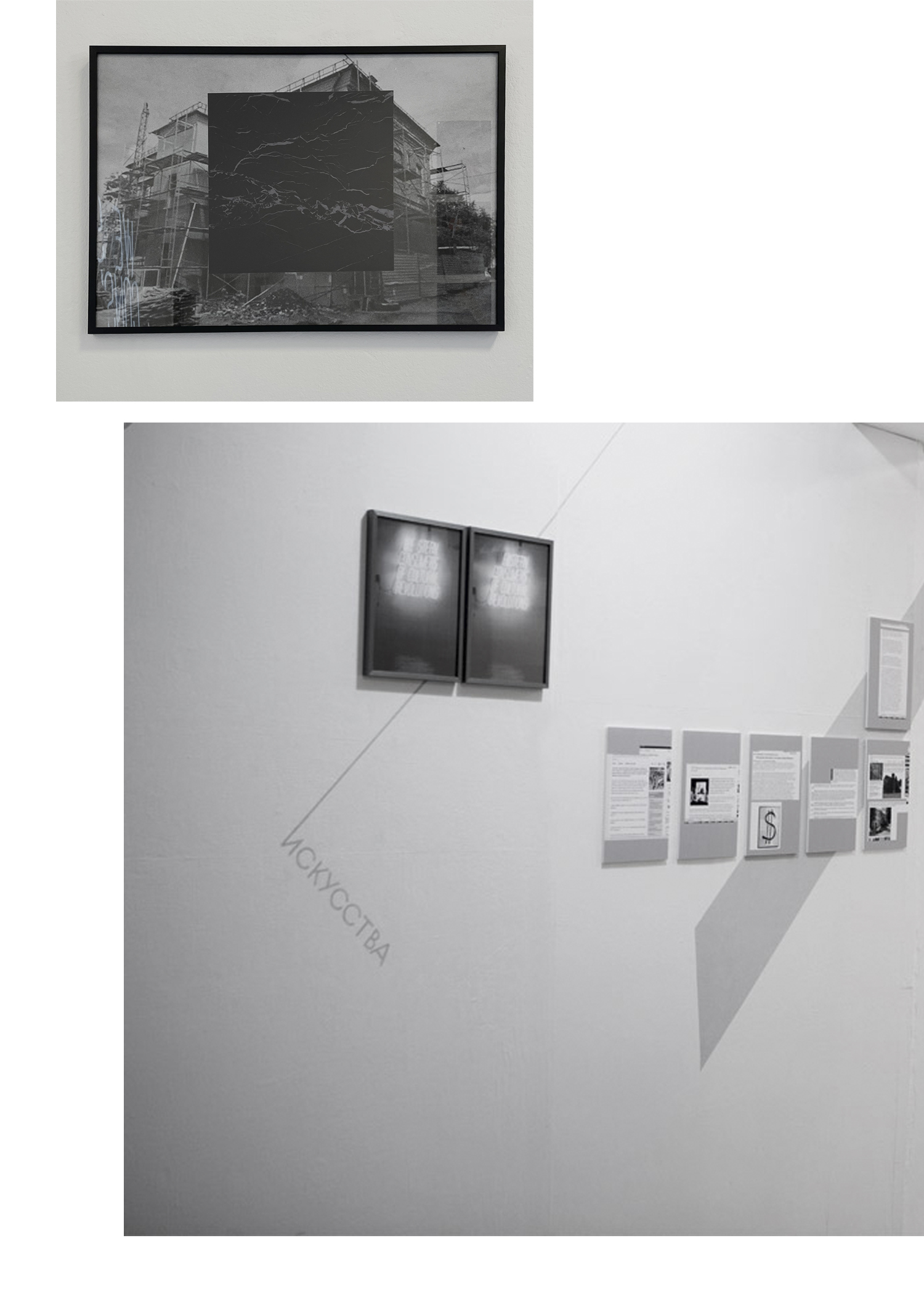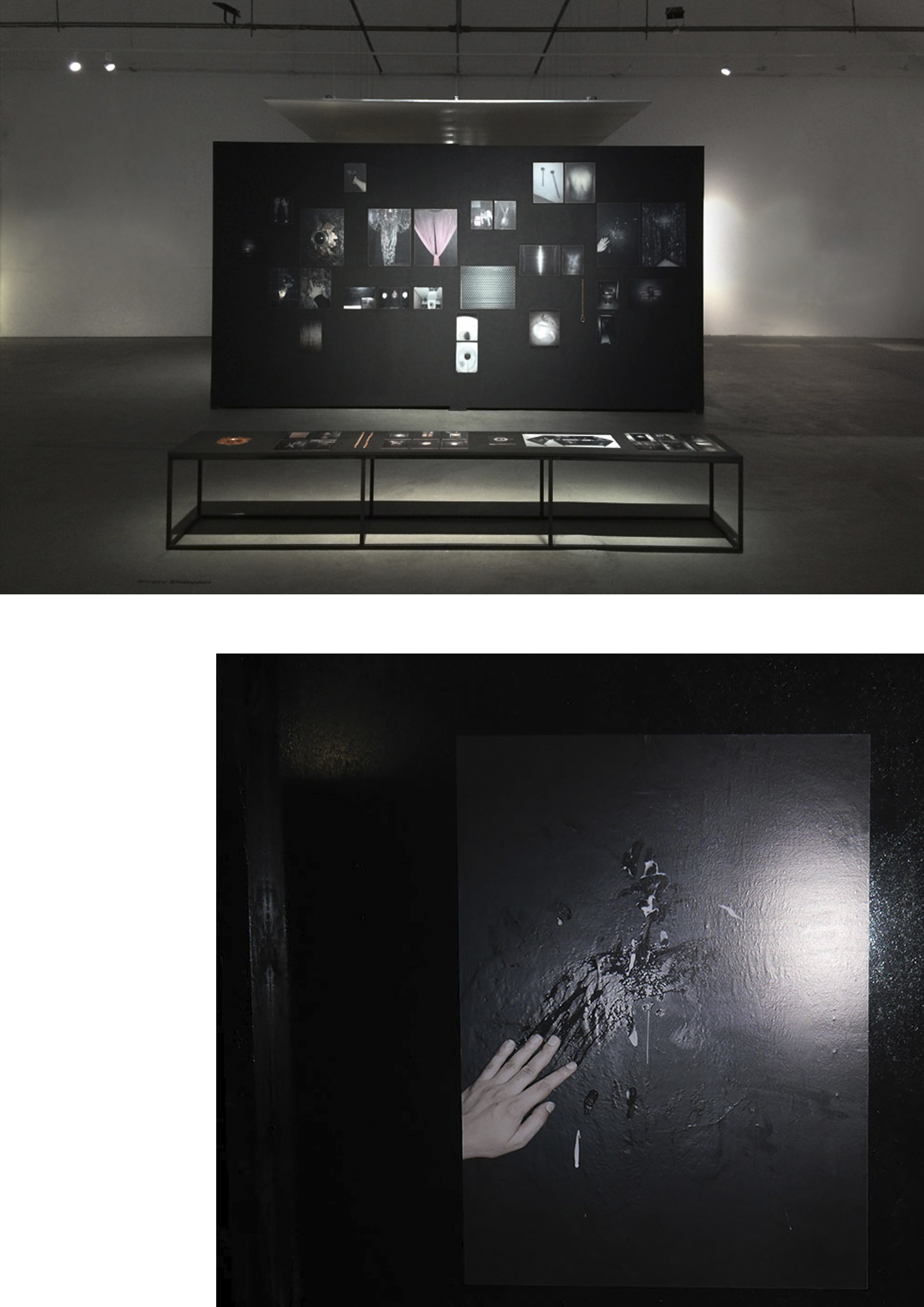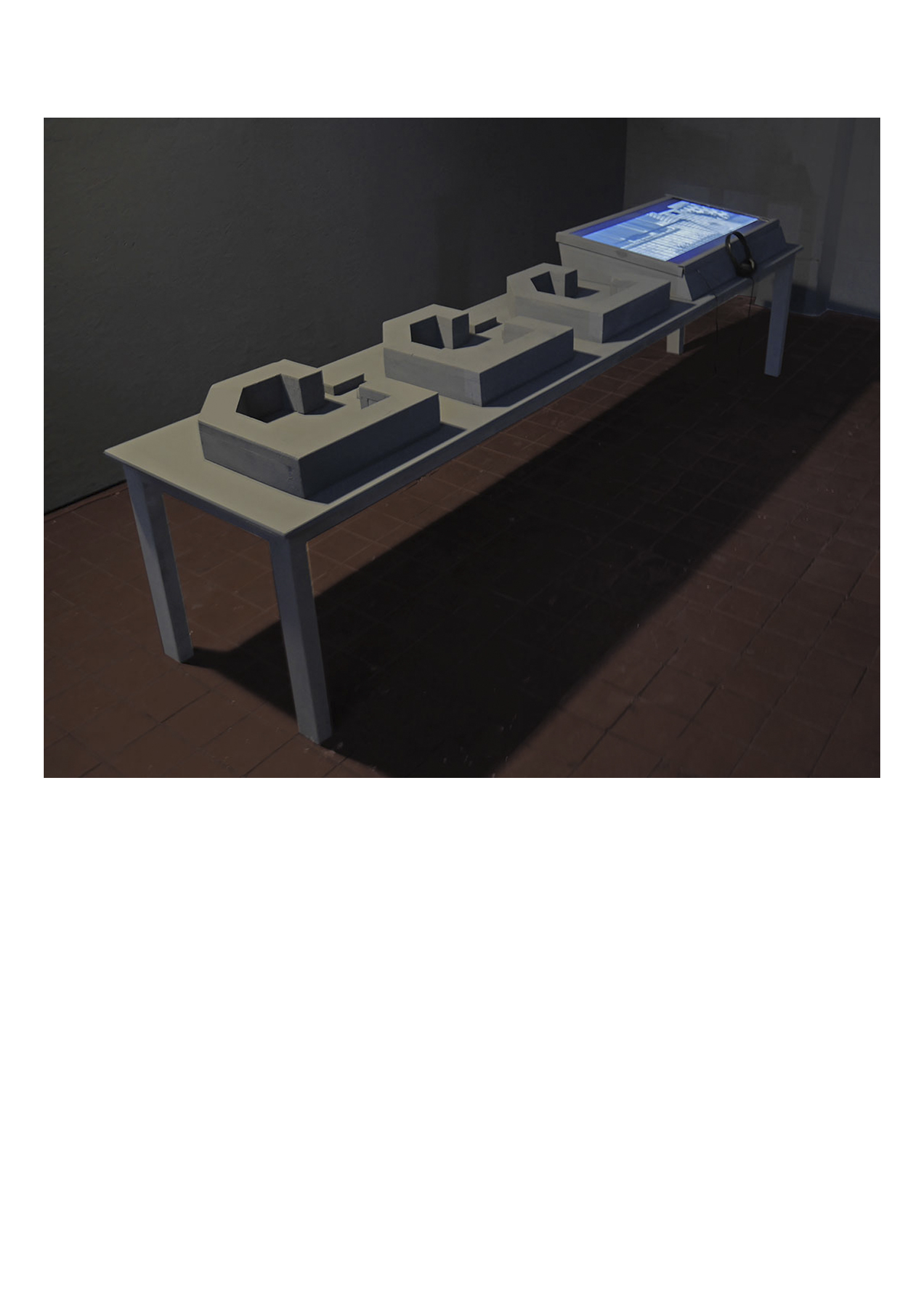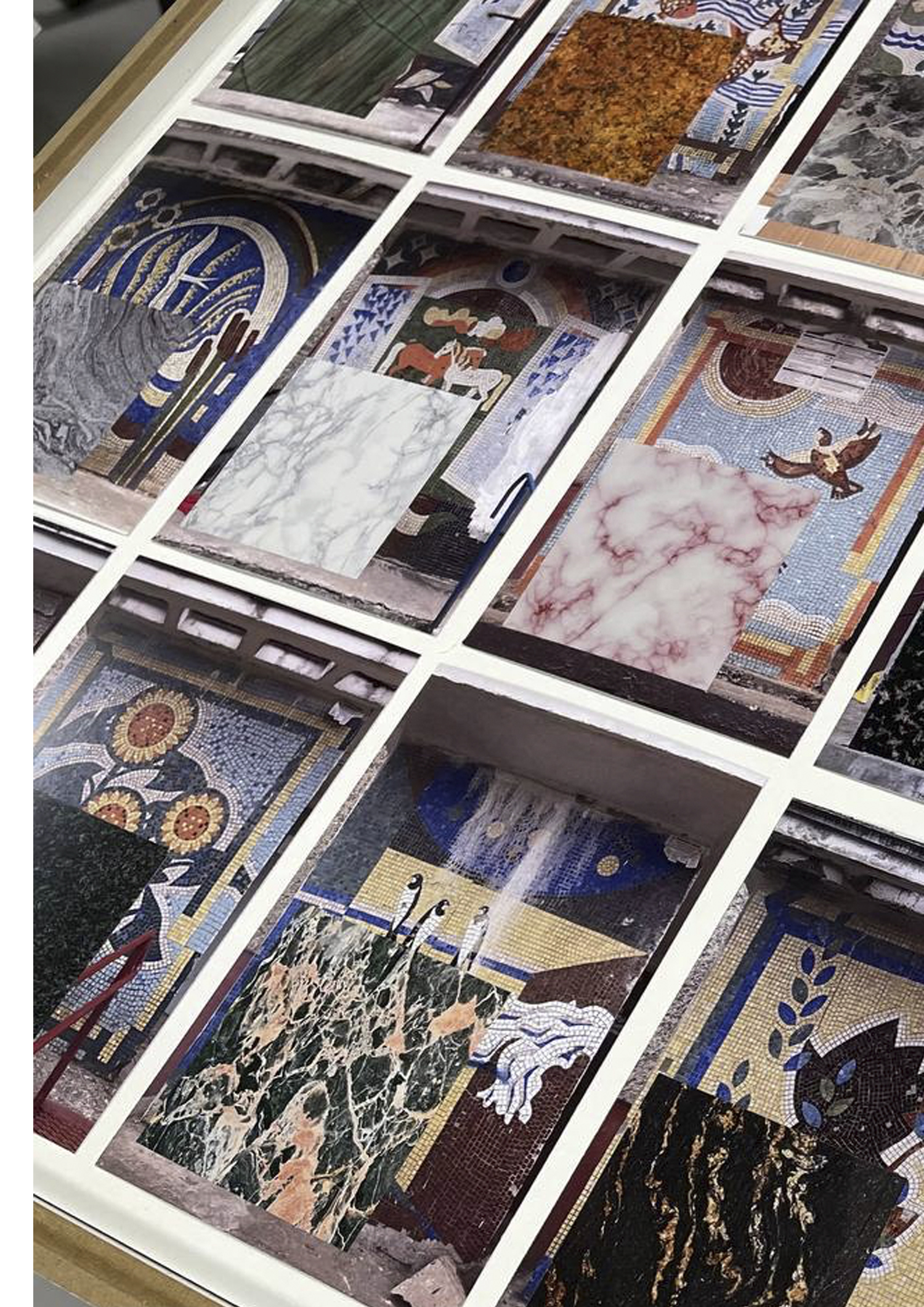Since 2020
A cycle about large-scale geopolitical upheavals: military conflicts, pandemics, protest waves, remaking of the world order, cultural revolutions – by way of example of the turbulent times in the Eastern European region. This cycle presents mental landscapes in the context of current news nervous storylines. Different imagery collides in the works – geometric plates are layered on different backgrounds depicting landscapes and spaces. Taking the ideas of avant-garde art of the 1920s as a basis, the artist has transferred abstract forms into the context of the realistic, the twilight, the romantic and the expressionistic, creating an atlas of images of colossal transformations in culture, politics and, more broadly, human consciousness.
ID: C12
Since 2010
A total research archive of objects of fear found in Belarus from 2010 till 2018. This traveling mobile collection-museum consists of more than a thousand found and created objects, documents, images, slogans, video and audio files. All exhibits in the archive are fundamentally mundane ordinary objects that are evidence against the state (exemplified by the Belarusian regime), and demonstrate the deleterious effects on its citizens throughout life, beginning long before birth and ending with the regulation of a person's memory after his or her death. The cycle intertwines political science and art history, urban studies and sociology, mythology and biology. This cycle sequentially "dissects the body" of the Leviathan State into 18 carefully crafted artistic parts. Each part explores the mechanisms of emergence, rise, triumph, functioning and decline of the state ideology and practices of subordination.
ID: C4
Since 2014
The cycle is based on an observation of the practices of public cleaning services in Minsk, who are unable to wash away the corrosive graffiti from the Soviet marble and granite walls of underpasses and began to glue them with a self-adhesive film with a marble pattern. The artist called such quasi-marble "social marble" which anyone can afford. As part of the cycle, on the one hand, the artist uses this film to create works about communities and the rise of civil society in Belarus, about social transformation and the network of solidarity. On the other hand, this film symbolizes the Belarusian authoritarian regime, its censorship and the image of the pseudo-social state, which is based on the Soviet myth. This part of the cycle criticizes the historical fakes and nation-building mythology of the Belarusian state.
ID: C12
Since 2010
A research cycle that tells the story of the hidden aspects of history in the context of public space. Working with hidden history and displaced memory, for which historically-saturated public places in different locations around the world are chosen. For each work of the cycle the image of a storefront is created, in or around which the fragments of the work are placed. Various strategies are used to create showcases in the cycle: showcases/ ballot boxes; a showcase/greenhouse that defends environmental protest; a showcase/spontaneous monument about state sacralization of censorship; a showcase/parasite that returns the historical layer to a decorative monument; a fair showcase that criticizes the commercialization of history; a showcase/laboratory that ironizes the phallogocentrism of science, and so on. The images of transparency, glass/screen and showcase/window appear more than once in the cycle. Also, as part of the cycle interventions in museums are created, where their own museum equipment is exhibited, decommissioned after prolonged use.
ID: C3
Since 2012
The cycle observes the attitude towards the heritage of the historical avant-garde in Viciebsk. In the early 1920s, the art school UNOVIS was located in Viciebsk. The artist points to the fact that during the Cold War the ideas of the avant-garde were perceived much more positively in Western culture, while in Belarus the suprematism and constructivist ideas of UNOVIS were alienated for many years. The cycle looks at these processes and the attitude to the heritage of the avant-garde in the "West" and "East" by way of example of the reconstruction of the building of the Viciebsk public school and the establishment of a museum of the history of this school, which cannot stand up to criticism. The artist demonstrates how the ideas of avant-garde return to Belarus today in the form of mass-cult and design for the mass consumer and how the ideas of the avant-garde school are integrated into the modernity.
ID: C6
Since 2018
A cycle of works about migration and borders, smuggling and breaking down barriers. The cycle began to develop as a reflection on the bureaucratic mechanisms accompanying the artist's immigration process. The cycle also includes various works about borders: the crisis on the Belarusian-Polish border, military collapse, meat smuggling, and attempts to illegally breach borders. Discussions about the geopolitical crisis in the region made into a separate cycle: Atlas of Tectonic Landscapes.
ID: C11
Since 2014
The cycle is based on the dating practices of the gay community in men's toilets, using Belarus as an example. In the context of a patriarchal, conservative authoritarian state, all public spaces are literally scrubbed and deviant forms of behavior are alienated from society. Even the inscriptions on the walls of public toilets are quickly erased. That is why men have learned to leave messages for each other on the seams between the tiles – unnoticed by the cleaning services. Since 2006, the artist has had an impressive collection of such hidden inscriptions and drawings of what was depicted in the toilets, and reproduces this collection in the form of installations. This cycle is an image of public space in Belarus: sterilized, aggressive to any different forms of behavior, where everything that does not fit into the norms of the patriarchal and conservative Belarusian state is pushed out into hidden zones: clubs, apartments, toilets, and back alleys. These seams, according to the authorities, are covered with dirt, but they are a symbol of freedom of speech, the social grid, and the framework of a civil society.
ID: C13
Since 2016
The cycle seeks to critique official Belarusian culture through a paradoxical confrontation with the gay sex subculture. The cycle creates total installations that reveal the fears of the official culture and ideology in relation to the "filth" of LGBT subcultures. The installation is filled with photographs depicting the interiors and details of darkroom spaces found in gay clubs and bars in Warsaw in 2016. In addition to the collected photo archive, the installation includes the slogan "White culture is afraid to look into a black hole." The installation's “black cube” is framed in the “white cube” of the gallery space as a dark room, a labyrinth, or a chamber of horrors. The installation is opposed by the specific aesthetic dialect of “black rooms” against the ruling “white” (here = official Belarusian and Polish) culture, which, according to the artist, should stop being afraid of marginal aesthetics and thus overcome the “fear of castration”.
ID: C8
Since 2020
The cycle is based on a two-channel video about two parks: the Hasenheide in Berlin and Peoples’ Friendship Park in Minsk. During the pandemic in the summer of 2020, nightclubs in Berlin were closed and city residents began organizing illegal parties in parks. Particularly conspicuous were the raves of thousands in Hasenheide Park, in its northern part – a popular gathering place for the queer community. At the same time, there was an election campaign in Belarus – only in six locations in Minsk it was allowed to campaign, the most convenient of which was Peoples’ Friendship Park in Minsk. On July 30, 2020, an official picket of Sviatlana Cihanouskaya was held in the park. Tens of thousands of people came to the rally. Two screens show in parallel two seemingly so different contexts: illegal raves and official pickets; the soft reaction of the Berlin police and the aggression of the Minsk power structures; the sexuality of cruising and the energy of protest; white ribbons with a knot in the trees as a symbol of the LGBTQ+ community and white ribbons on arms as a symbol of the protest movement in Minsk; the myth of the mandrake growing from a male seed and the Belarusian mythology with semiotics of potatoes; etc.
ID: C14
2010–2013
A cycle of activist, institutional-critical and anti-aesthetic works, actions and installations. Against the background of the rise of civic activism in 2010–2011, Sergey Shabohin created a web-portal Art Aktivist, which aim was to politicize Belarusian art and manifest the need to transition from partisan strategies in the art of Belarus to art activism. During this period the artist abandoned drawing in favor of other media: activist strategies, video, installation, actions and texts. He resorted to the method of so-called anti-aesthetics – the abandonment of the search for his own representationalism in favor of the existing artistic language of leftist political discourse. As part of the cycle, he criticized the art system, proclaimed slogans, gave lectures, and collaborated with civil society.
ID: C5
Since 2018
The cycle is dedicated to Navapolack, where the artist was born. Navapolack is one of the youngest cities in Belarus, which began to be built in 1958 around the city's oil refinery. The city was a Soviet utopia, which did not materialize, and under the new political and economic conditions, the city began to decline. This is also indicated by the construction of the housing blocks in the form of letters СССР (USSR), but the last house in the form of the letter Р (R) was not completed due to the collapse of the Soviet Union. The main work of the cycle is a video based on selected shots of the feature film Street Without End (1972) by Belarusfilm film studio. This cycle is about Soviet utopia and its unfulfilled aspirations, urbanism and nature, memory and nostalgia.
ID: C10
2016–2017
An interdisciplinary project exploring the processes of mythologizing a specific historical event – the 1991 Belavezha Agreements, when the presidents of Russia, Belarus and Ukraine signed an agreement to dissolve the Soviet Union. The project was created together with Russian colleagues and includes a light installation, dance, sound, multi-channel video, as well as a constructed research archive of objects and images. The project PUST* is an attempt to comprehend through artistic means a specific historical event, its symbols and mythology, a way of filling in the gaps in one's own "mental map".
ID: C7
2009–2013
An artist's debut cycle based on strategies of appropriation and dialogue with other artists. Within the framework of the cycle the works are created in one way or another connected to the history of art and reflecting upon the situation in the art system: critique of commercialization of art and consumerism, refusal of authorship and concept of death of an author, institutional critique, self-reflexive conceptual works, self-irony. Most of the works in the cycle refer to the works of other artists in the context of a critique of the consumerism of culture.
ID: C1

